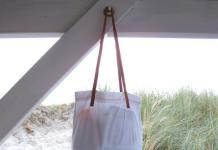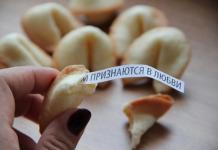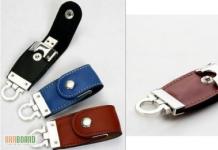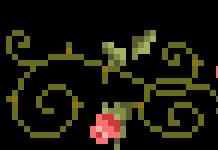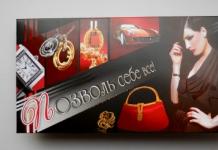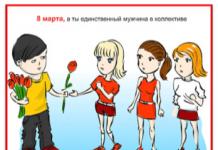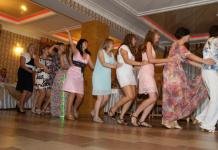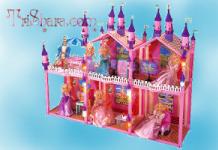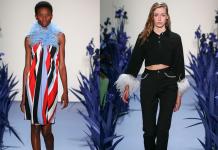Based on these beliefs, he directed all his efforts to develop a method through which children could be taught to read in a fairly short time. And he succeeded. Many parents believe that Zaitsev's technique is one of the most effective.
Despite the fact that this technique is effective and has been used for 20 years, Zaitsev never ceases to improve it. Based on it, he creates new educational games.
Zaitsev's technique for children is based on two main principles:
- Cognizing aspects of reading, 5 types of perception should be involved (thinking, touch, motor, auditory and visual memory);
- A teacher is a mentor who can create an inviting play atmosphere that is conducive to learning.
- Who love quiet games;
- Who do not differ in assiduity;
- Have vision or hearing problems;
- Diagnosed with autism;
- Those with mental disabilities.
What is the goal it pursues:
- Replenish the dictionary with new words;
- Teach to write correctly;
- Make speech intelligible, get rid of speech therapy problems;
- Develop thinking, logic;
- Teach independent work.
Kit for Zaitsev's technique
The set is rather cumbersome.
It includes:
- Collected cubes made of cardboard in the amount of 61 pieces;
- Cardboard tables with graphic signs, letters and syllables (6 pieces);
- Cardboard tables (B3 format) in the amount of 4 pieces;
- Disk;
- Synopsis for conducting classes in the form of a teaching aid.
Despite the large number of constituent parts that the "Zaitsev Methodology - teaching to read" provides - a table, a manual, cubes and so on, its essence is quite simple and clear.
Warehouse according to Zaitsev's reading method
The methodology of a well-known teacher in a warehouse is based. It is they who replaced the syllables. In this technique, a warehouse is considered to be a combination of two letters - a consonant and a vowel or a vowel letter and a solid sign. Also, one letter can be called a warehouse.
To determine the number of warehouses that make up a word, you need to put your palm under your chin and pronounce it. There are exactly as many of them as the chin touches the palm of your hand.
Tables, cubes are a collection of warehouses. In order for the child to navigate and recognize the necessary cubes, they are painted in different colors and also differ in size. In addition, each warehouse sounds differently.


What is the essence of Zaitsev's technique
According to this methodology, children cannot be taught using an authoritarian style. Instead, they need to become a friend and learn through play. Classes do not require perseverance from children. They are allowed to move, dance and even sing using blocks.
Let's take a closer look at the cubes:
- Warehouses that sound solid are depicted on large cubes, while those that sound soft are depicted on small ones;
- They can be single or double;
- If the warehouse is ringing, the metal is indicated, and if the warehouse is deaf - wood;
- Vowel letters - marked in gold;
- The wood-iron and wood-gold cubes bear a hard and soft sign, respectively;
- Punctuation marks can be found on a white cube.

On sale you can find sets of three types:
- With ready-to-use cubes;
- With a layout that you need to assemble yourself;
- With plastic base.
At the beginning of the training, children should be introduced to the cubes, which depict 200 warehouses. After getting acquainted with them, you can go to the tables. In order to prevent the development of scoliosis, as well as vision problems, experts recommend choosing the correct height for their fixation. For this, the baby should be asked to raise his hand up, with it he should easily reach the top edge of the table.
For convenience, tables can be hung not along the wall, but in the corner of the room. So it will be easier for children to navigate in them, since everything they need is in their field of vision.

Warehouses, which are depicted on the cubes, children should sing. This contributes to the fact that they better remember the material, it is deposited in memory. In addition, this approach allows you to instill an interest in singing from early childhood.
All training material should be freely available. Before the lesson, you need to give the baby some time so that he gets acquainted with it. Then you can start studying. First, ask him to choose from the total number of cubes the one that interested him the most. Sing to him the warehouses that are marked on his edges.
Do not focus on this exercise for too long. It is very important that the baby does not lose interest. So after singing the warehouses, ask him to choose several cubes - different sizes and colors. This will help him understand that they are all different, both in size, color, and sound.
Now you can move on to the tables. Choose one of the columns and sing it to your baby. It is not at all necessary to demand from him that he sang too. He himself must take an interest in this process. You can ask him to bring cubes in which the warehouses correspond to what you just chanted in the table.
When the kid starts singing the warehouses in the table on his own, he will gradually understand the principle of the formation of the word. At the same time, he can be taught to write, while doing everything in a playful way. The child will be interested, and the training will give good results.
A prerequisite for such activities is the good mood of the children and their desire. It is recommended to conduct them daily. But if you see that the child is not in tune, something worries him - the planned lesson should be abandoned.
When to start teaching reading with Zaitsev's cubes
The creator of this technique claims that it is possible to acquaint a baby with cubes almost from birth. At the same time, one should not expect that he will learn to read before he speaks. Not at all. During this time, they can be used as toys.
When he is six months old, you can start singing the warehouses. He will be interested, and very soon he will do it with you.
But at 1–1.5 years old, you can already acquaint children with warehouses. This can be done in a playful way, for example, suggest:
- Add your name from the offered cubes;
- Populate the zoo with animals. In each imaginary cell there must be a certain animal, the name of which is collected from the cubes offered to the baby;
- To cook a favorite dish. To do this, you need to collect all the necessary ingredients from the cubes.
The older the child gets, the more difficult games should be offered to him.

Advantages and disadvantages of the technique
The advantages of the technique include:
- Fast learning. Everything here is individual. Judging from the parental feedback, the older the child is, the faster he learns to read. So, at the age of 6 years, children master the basics of reading after a week of regular classes, at 5 years old - after 12 classes, at 3-4 years old it can take up to 6 months.
- There is no age limit. This allows you to study with children of the first year of life or future first graders. Differences will only be in the complexity of the tasks.
- Positive effect on the development of hearing and memory.
- The development of fine motor skills of the hands.
- An individual approach to every kid. The features of its development are taken into account. During training, no one forces him to do anything, does not rush and does not compare with other children. Everything happens at will.
- The simplicity of the technique. Many parents successfully use it for homework.
- Along with reading, children learn to write correctly. This is possible due to the fact that on the cubes the letters form the correct warehouses, they do not contain those that are not in the Russian language.
- The technique allows you to preserve vision - the eye muscles are trained, the letters are of the correct size, they are not small, and the colors are selected so as not to strain children's eyes.
- The method is designed to reduce the likelihood of conflict situations between three parties - teachers, children and their mothers, fathers.
- The ability to practice without adults. It is enough to show the children the principle of the methodology, and they can practice without the participation of adults, learning new material in the process of playing.
- There is no need to study the fusion of letters into syllables. Instead, ready-made warehouses are offered. This method teaches you to read the text quickly, without stuttering.
The method also has some disadvantages that parents should be aware of:
- Defectologists and speech therapists are not very good at this technique. This is explained by the fact that children memorize warehouses, while they do not understand how the letters merge. In the future, this leads to the fact that they cannot divide the word into syllables or parse it in composition.
- At school, they teach to designate sounds with one color, and according to Zaitsev's method, it is proposed to do this differently. The child is confused. It will take time to retrain him.
- The allowance is not cheap. If the choice was made in favor of layouts that require self-gluing, then this will be time-consuming.
- The method is ineffective for babies who have a more developed left hemisphere. Their figurative thinking is not very well developed.
- Isolation of a single sound can be a real problem for some children, which affects the writing.
- During training, attention is not paid to the creative abilities of children.
Every parent wants his child to be the most developed and smartest. Parents take great pride when their child is three or four years calmly reads advertising signs, sitting in the car or walking by. Training always begins with the choice of a methodology, of which there are now a great many. Learning to read with Zaitsev's cubes is the most effective for working with the smallest.
Zaitsev cubes: what is it
 For more than twenty years, the author's method of Zaitsev has existed. Despite this, it is constantly being improved. To date, many games and techniques have been created that are an addition to the base. With this technique, even the smallest children successfully learn to read and write... For example, for a six-year-old child, a couple of lessons are enough for him to start reading.
For more than twenty years, the author's method of Zaitsev has existed. Despite this, it is constantly being improved. To date, many games and techniques have been created that are an addition to the base. With this technique, even the smallest children successfully learn to read and write... For example, for a six-year-old child, a couple of lessons are enough for him to start reading.
Zaitsev's technique is suitable for both children who love to play calmly and restless, active children.
This method of teaching reading is suitable for children with hearing impairments, vision impairments and mental disabilities. Reviews say about the achievement of excellent results. Children with autism also perform well.
Zaitsev used all types of perception in this technique, such as visual, auditory, motor, thinking, touch and memory. Working with kids, the teacher must organize learning in a playful, casual manner and at the same time become a mentor for the children.
Studying according to the Zaitsev method, you can:

The set of methods includes:
- Sixty-one assembled cardboard cube.
- Six tables made of cardboard with letters, syllables and other signs.
- Four tables made of cardboard in B3 format.
- A disk containing songs for tables and cubes.
- A manual that can be used as a synopsis for classes.
The SMARTUM Child Development Center is a great chance to refuse tutors in a specific subject and give preference to the all-round development of a child of school and preschool age.
Warehouse, what is it?
Zaitsev's technique uses an alternative to syllables - warehouses. There the warehouse is the basic unit of the language. The combination of a consonant or vowel, a hard sign and a consonant, or just one letter - all this is a warehouse. The basis of this technique is warehouse reading.
The hand is applied just below the chin, then a word is pronounced, the strength of the muscles, which is felt by the hand, is the warehouse.
According to Zaitsev's method, warehouses are located both in tables and on cubes. There is no analytical thinking in teaching, since it develops only by the age of seven. The warehouses, which are located on the cubes, differ in size, sound and color. This is done for the work of all channels of perception.
What is the Zaitsev technique
 In this methodology, there is no authoritarian style of communication between the teacher and the children. Here it is individually taken into account development and characteristics of each child... Classes are held exclusively in the form of a game. Children sing, move, dance, jump, and all this is accompanied by a game with cubes.
In this methodology, there is no authoritarian style of communication between the teacher and the children. Here it is individually taken into account development and characteristics of each child... Classes are held exclusively in the form of a game. Children sing, move, dance, jump, and all this is accompanied by a game with cubes.
The cubes have different sizes. The large ones show the hard sounds, the small ones show the soft sounds. They can be either double or single. Doubled cubes have consonants on themselves, which are combined only with certain vowels (zhu-zhu-zha).
Metal denotes a ringing warehouse, and wood denotes a deaf one. Vowels are associated with gold. There is a hard mark on the cubes of an iron-wooden color, and a soft mark on a wooden-gold color. The white cube is covered with punctuation marks. The color scheme of the letters differs from the school one. Vowels here are indicated in blue, consonants in blue, and soft and hard signs are indicated in green. Zaitsev believes that the difference from the red, blue and green colors that are used in school helps the child to start reading fluently.
As for the filling, it is different for the cubes. Those who are just starting to learn first get to know only cubes, a little later they will be introduced to tables. There are fifty-two dice in a set and seven more duplicate dice.
Sets are:
- Collected;
- Plastic-based;
- Cubes that you need to glue yourself, this includes a separate layout.
It will take a long time to glue the cubes on your own. From the inside, they must be additionally strengthened. This can be done using a cardboard cube of the same size. At the end of gluing, it is recommended to cover the cube with rubber bands, it did not fall apart during the drying process. To make the cubes stronger it is recommended to cover them with foil or laminate the sweep. When choosing this option, it is recommended to duplicate each sweep in order to have a stock of warehouses in which the words will be written.
Tables should be hung high to prevent visual impairment and scoliosis. If classes do not take place in a group, but individually, then the height is determined by the child's raised hand. He should be able to reach the top of the table. Often, tables are placed in the corners of the room to make it easier for the child to find the right warehouses. Tables, so that they serve longer, are also wrapped in foil. Tables are just as important as playing with dice.
The technique involves the singing of all the warehouses. The author came to the conclusion that singing can interest a child more quickly.
The cubes should always be in front of the baby's eyes, first he will get acquainted with the manual, having carefully examined it. Let the child show the cube that interests him the most. The warehouses that are written on the edges of the cube are shown chanting. Then the child should be asked to find a large cube, then a small one, wooden, iron, gold. This is necessary so that the child understands that the cubes have different sounds and they have different sizes.
When the kid understands the essence of this information, he should be shown the syllabic tables. You need to sing one column from the table and ask the child to bring the same warehouse on a cube. You need to sing expressively to demonstrate what kind of warehouses are: deaf, sonorous, large or small. Many people use movement as well. The child does not need to sing in response to the warehouses until he himself wants it and does not come to it.
The child can be taught to write using bricks or a pointer. An understanding of the composition of words comes by regularly showing the warehouses on the table and singing them. By playing various games, including outdoor games, you can teach your kid to write. It is recommended to conduct classes regularly, day after day, even if a little, however, if it is clearly visible that the child is not in the mood to study, it is better to postpone it, in no case should it be forced.
In training, you need to use exactly favorite games of the child... If the baby is active, the games should be active. It is better for persevering children to offer calm entertainment.
The technique is successful if all the requirements are met in full, and not some selective elements.
Advantages and disadvantages of the technique
Any technique nowadays has its pros and cons, and Zaitsev's cubes are no exception.
Advantages of the technique:

Cons of the technique:
- Creativity is practically not developed.
- Difficulty understanding certain sounds can affect writing.
- The choice when writing E and E is difficult.
- The benefits are expensive.
- Sound colors differ from school.
- Children can skip endings in words.
The technique of Nikolai Aleksandrovich Zaitsev is today considered one of the best developmental systems for teaching preschoolers to read, write and count. This method is universal - it is perfect for working with one and a half year old children, and with three years old, and with older children. Moreover, the Zaitsev system gives very good results when working with babies with developmental delay, as well as with visually impaired, hearing impaired and deaf children.
Zaitsev's cubes and tables are also successfully used to teach Russian to foreigners.
Learn by playing
 The methodology of Zaitsev's cubes is based on the vast pedagogical experience of Nikolai Alexandrovich. Its creator is not a theorist. For many years he worked in various childcare institutions and watched both normally developing babies and those who had any problems or lags. As a result, a whole system of early childhood development emerged, based on the following basic principles:
The methodology of Zaitsev's cubes is based on the vast pedagogical experience of Nikolai Alexandrovich. Its creator is not a theorist. For many years he worked in various childcare institutions and watched both normally developing babies and those who had any problems or lags. As a result, a whole system of early childhood development emerged, based on the following basic principles:
- Principle one - lack of coercion. Children learn by playing. Sometimes they do not even suspect that the educational process is going on, because there are no tables or desks, kids can run, sit, come closer or stand to the side - whatever they like best. Children do not have to repeat the words after the teacher - everything happens only on a voluntary basis.
- The second principle is reading in warehouses. Children do not learn letters, but read through the warehouses at once. Just do not confuse with syllables! A warehouse is a speech unit of the Zaitsev method, it is a consonant-vowel pair, or a consonant and a hard or soft sign, or one letter. All warehouses are recorded in tables and on the edges of the cubes.
- Principle three - we start with a "letter". Children show the necessary warehouses in the table or find cubes for composing a word, that is, they turn sounds into signs - and, after all, this is a letter! The essence of the Zaitsev method is to show the child the words, and not to explain how individual letters merge into syllables, and then into words.
- Principle four - use of multiple senses. When learning, hearing, sight and touch are involved, there are a lot of cubes - large and small; light and heavy; "Gold", "iron", "wood" and white; with different fillings that sound louder or softer. The inscriptions on the cubes are bright, clear, multi-colored - they can be seen from afar. "Sounding" cubes become one of the most favorite toys of almost all babies, starting from six months.
These principles are the basis of teaching according to the Zaitsev method. After all, the development of intelligence in children under one year old is not the same as in seven-year-olds. Small children do not know how to think analytically, it is difficult for them to turn abstract letters into sounds, and then put them into words, but they are especially susceptible to signals from the senses. Therefore, the cubes help to distinguish between different sounds - vowels and consonants, soft and hard.
When and how much to do
 Zaitsev's cubes and the method of teaching reading can be applied almost everywhere - in kindergartens, in schools or at home, of course, group lessons under the guidance of an experienced teacher give the best results. With the right approach and following all the rules of the methodology, six-year-old children begin to read after a few lessons, four-year-olds after about 16-20 lessons, and two-three-year-olds after six to nine months.
Zaitsev's cubes and the method of teaching reading can be applied almost everywhere - in kindergartens, in schools or at home, of course, group lessons under the guidance of an experienced teacher give the best results. With the right approach and following all the rules of the methodology, six-year-old children begin to read after a few lessons, four-year-olds after about 16-20 lessons, and two-three-year-olds after six to nine months.
Zaitsev's methodology provides for two sessions per week, 30-60 minutes each. If you study at home, you can devote as much time to study as you see fit. If the child is really interested in this, you can practice every day for 30 minutes a day. Moreover, it is absolutely not necessary to adhere to any strict schedule - the main thing is that the child has a good mood and desire! In no case should you force him or tear him away from his favorite activities. Learning should be an interesting game and should not create negative emotions.
You can acquaint children with Zaitsev's cubes from three months. Of course, at first they need to be used simply as rattles. But starting from 6 months, you can sometimes make up the simplest words from cubes, name and show them. For example, a wardrobe, a table, a chair, a bear ...
From two or three years old, you can already start learning to read.
Classes according to the Zaitsev method
Today "Zaitsev Cubes" can be bought in many stores of children's goods. The set usually includes:
- 6 cardboard sheets with tables, format 520 × 720 mm;
- 4 sheets with tables, format 360 × 520 mm;
- 61 cardboard cubes (50 × 50 mm and 60 × 60 mm);
- audio CD;
- color "Textbook for parents, educators, teachers";
- packing box.
Tables
 Before starting classes, you need to glue the tables and hang them on the wall. The height at which the tables are located depends on how many kids will be engaged at the same time.
Before starting classes, you need to glue the tables and hang them on the wall. The height at which the tables are located depends on how many kids will be engaged at the same time.
- For group lessons. In classrooms, as a rule, tables are hung at a distance of 160-170 centimeters from the floor - so everyone can see it clearly. There are three shelves under the tables - on them kids put words out of cubes. There must be a long pointer in the classroom - the teacher and children will use it to show the warehouses and "write" words. The cubes do not need to be sorted - the little ones must learn how to quickly find the necessary warehouses themselves.
- For home use. For one child, the tables are attached in such a way that they are located just above his height. Well, you can just add the cubes on the table.
Cubes
If you bought blanks, then you will first have to assemble or glue them. Even if the kid has expressed a desire to do it on his own, it is better to control the process - then he will not be tempted to "gut" the "ringing" cube and examine its filling.
It makes sense to strengthen paper cubes with cardboard from the inside and tape along the edges. The most frequently used warehouses are best "duplicated". Before assembling, just copy the images and make several identical cubes - then the baby, without any problems, will be able to add any words.
Audio disc
Classes on Zaitsev's cubes are usually conducted with musical accompaniment. The set includes an audio CD containing 35 melodies. Under them children at each lesson will "sing" all the warehouses. This is a very important part of learning, as babies learn to articulate sounds distinctly and clearly. The play principle makes this process fun and not tiring - as a rule, children sing along with adults with great pleasure. By the way, many educators and parents note that after learning according to the Zaitsev method, the child's speech becomes much cleaner.
Manual
The Zaitsev Cubes set includes a teaching aid, of course, it is better for your child to learn from an experienced teacher who has mastered the Zaitsev method well, for example, in a kindergarten or in a children's development center. But you can do it yourself. Honestly, there is nothing complicated here, just read the manual carefully - the whole process is described there in an accessible language and in great detail, there are also descriptions of many games and interesting tasks with which you can start learning. Later you will be able to come up with games that will be interesting to your baby.
If for some reason singing the warehouses is a problem for you, pronounce them in a recitative. Singing or speaking the warehouses, show them on the table with a pointer or on a cube, turning it in front of the child - this is very important! Simultaneous exposure to sound and vision dramatically increases the effectiveness of training. In addition, the child trains eyesight and memory, and also learns attention.
The advantages of the Zaitsev technique
There are a lot of them! Adherents of this training system note that:
- Children quickly begin to read fluently. Moreover, reading is not perceived as something difficult and requires additional efforts - everything happens in the game, as if "by itself."
- Memory improves, the ability to think logically develops.
- Children subconsciously memorize the correct spelling of words.
- Regular pronunciation of words corrects speech deficiencies, the child begins to speak more clearly and clearly.
- Vocabulary is expanding dramatically.
- Trains - and sometimes even improves! - sight, since the eyes must constantly follow the pointer.
- Classes do not harm health - children move a lot, they have to raise their heads, which is very good for posture.
- The ability to concentrate is formed, the child learns to work independently.
- Zaitsev's method is universal, it is suitable for children of any age, and can be used to teach children with various disabilities.
- The technique is quite simple, with a certain perseverance, even "unprepared" parents can use it at home.
Disadvantages of the technique
However, the reviews about Zaitsev's cubes are not only positive - some parents and teachers have many complaints about this technique. And not to say about them - it's just not fair:
- The main disadvantage of the Zaitsev method is its incompatibility with the official school curriculum.
- At school, children have to relearn from reading in warehouses to reading in syllables. And sometimes this process is very painful.
- The color scheme of the cubes does not correspond to the color scheme used in the school for the designation of consonants, vowels, voiced and voiceless sounds.
- Children who have learned according to the Zaitsev method hardly master the parsing of words by composition and phonetic parsing - after all, they are used to dividing words only according to warehouses.
- Study guides are expensive, cumbersome, and time consuming to assemble.
- Not all parents are able to quickly teach their child to read. The method is more suitable for lessons with an experienced teacher.
Output
As you can see, learning using Zaitsev's cubes is undoubtedly a very interesting and noteworthy method. It is good because it suits all children, regardless of age, ability and temperament. Whether to use cubes or rely on classic learning methods is up to you.
Girls! Let's do reposts.
Thanks to this, specialists come to us and give answers to our questions!
Also, you can ask your question below. People like you or experts will give the answer.
Thank you ;-)
All healthy kids!
Ps. This also applies to boys! It's just that there are more girls here ;-)
Did you like the material? Support - repost! We try our best for you ;-)
If you are not yet familiar with the “Zaitsev's Cubes”, which have helped thousands of children, literally in no time, master the reading skill at an early age, then you are still a “beginner” in the topic. Because these "magic" cubes have long glorified the name of their creator ...
Zaitsev's Method: A Non-Standard Approach Works Better!
Nikolai Aleksandrovich Zaitsev was born in 1939. During his life, the author of the “Zaitsev Methodology” acquired enormous experience in pedagogical work with children: working as a teacher in an orphanage, a teacher in a correctional colony for adolescents, a teacher in a boarding hospital for mentally retarded children. Of course, Zaitsev also worked with ordinary children: a teacher of the English language, as well as the Russian language and literature. The experience is colossal!
Even before the appearance of the "Zaitsev method", its author was sure that he would not follow the traditional methods of teaching reading. Zaitsev considered this approach not only outdated, but even harmful to the psychomotor and health of the child. Zaitsev's methodology is a fundamentally different direction in the methods of teaching reading (Zaitsev's cubes), as well as teaching grammar and mathematics. The main idea of his approach is based on the assumption that every child has a natural need to play from birth.
The manuals that are used in the Zaitsev method are, first of all, toys, fascinating children's toys. And only secondarily - educational materials.
Working on the methodology, Zaitsev worked with children in elementary grades. He was faced with the fact that the traditional methods of teaching children the Russian language are too cumbersome, overloaded with conventions and rules, and suffer from a lack of clarity. To learn their native language, students are often forced to memorize the rules without delving into the content. Zaitsev considered that it is rather difficult to change the teaching system at school. Therefore, he turned to preschool education, to small students - from one and a half years.
Learn playfully!
According to Zaitsev's methodology, the learning environment should be free and playful. Children do not need to sit at small desks; instead, they can sit right on the floor. This will facilitate the creative process and will not harm the child's posture. But, despite the free environment, the learning process is still not a rest. In his methodology, Zaitsev argues that search and choice lie at the heart of any educational process, even if it is organized in the form of a game.
Studying with "warehouse tables" and Zaitsev's cubes, the child will constantly look for an answer or solution. In the process of "playing", the child will learn to read, isolate syllables from words, determine stress in words, form words into sentences, as well as count and write. At the same time, Zaitsev's technique fully uses all children's senses: touch, hearing and sight.
The "highlight" of the technique is Zaitsev's cubes
The most famous textbook of the Zaitsev technique is the cubes of the same name. Zaitsev cubes can be used to teach a child to read from two years of age. They can be used both at home and in kindergarten. The manual represents cubes of different sizes and colors, on which all the warehouses of the Russian language are depicted at once. Classes with blocks allow older children (from 3 years old) to learn to read very quickly, and toddlers (from 1 year old) will help them start talking and, possibly, reading.

While developing the methodology, Zaitsev came to several important conclusions. These conclusions will help you understand how magic cubes work:
- First, for a child to learn to read, he does not have to memorize the names of letters. In general, Nikolai Zaitsev has always been against the traditional alphabet. In the alphabet, all letters correspond to a certain pattern. On the letter "A" is drawn "watermelon", on "B" - "hippopotamus" or "loaf" and so on. Studying the alphabet, the child, of course, memorizes letters and drawings. But how does he then put the zebra, watermelon, lizard and heron into the word "hare"? So it turns out that parents and teachers, after the child has learned the letters, must figure out how to show him that the letters must then make up syllables, and then words.
- Secondly, it is difficult to read some words by syllables. A different syllable can consist of four, five, or even ten letters. Take "splash" for example. One word, one syllable, and seven letters. And there are many such examples in Russian. Therefore, instead of syllables in the Zaitsev method, warehouses are used - pairs of a consonant and a vowel (also from a consonant and a hard or soft sign, and from one letter). For example, SO-BA-KA, PA-RO-VO-3 and so on.
It is necessary to start acquainting the child with the Russian language with the help of "Zaitsev's cubes" according to the following scheme:
- 1 Grouping and classification of cubes.
- 2 Scoring cubes.
- 3 Search.
- 4 Reading words.
The grouping of cubes is their distribution into groups in accordance with the selected characteristics. Such signs can be:
- Cube size.
- Cube color.
- The color and sound of the cube.
- The size, color and sound of the cube.
- By vowel letters.
Negotiate and mix
Start simple. Try to separate all the large cubes from the small ones, explaining to your child how they differ from each other and why the big one should be placed on top of the large ones and the small on the small ones. Go to double cubes only after the child gets used to and learns to group single cubes by size.
Then move on to grouping by color. Collect all gray cubes separately, yellow cubes separately, and so on. Ask your child to show you the gray cube, then show you the brown one. Ask him to serve you a gray, then a brown cube.
In the next step, group the cubes by color and sound. Ask your child to show you the gray cube. Then shake the gray cube. Then take a cube of a different color and shake it. Cubes sound different. Ask for a cube that sounds the same as gray.
At the stage of scoring the cubes, show the child the cube and pronounce the depots drawn on it, each time turning the corresponding face of the cube towards the child. Then have your child “sound the blocks” together.
The search stage is needed to assimilate and consolidate the passed material. Ask the child to find a cube with a storage facility, for example, with "B-BA-BO-BOO-B-B-BE", and bring it to you.
The hardest and most enjoyable
Finally, the most difficult stage is Reading (or rather, according to Zaitsev's method, "reading"). At this stage, words need to be added from warehouses on different cubes. Start with the child's name. Add, for example, the word "Sasha" from cubes with warehouses "SA" and "SHA". Let the child find these cubes for you.
Finally, one more piece of advice. When you buy a set of "Zaitsev cubes", do not rush to immediately glue the cubes from the blanks. If you want to make your "cube-vocabulary" wider, copy the most common warehouses (for example, cubes with warehouses "MA", "PA" and others with a vowel "A"). Later you can make more new words out of these blanks.
You can easily find more detailed instructions on the use of cubes in numerous publications by Bereslavsky.
None of the teaching methods for teaching reading and writing can be perfect. Consider the positive and negative aspects of teaching children to read according to the method of Nikolai Zaitsev.
Advantages of the technique
Fluent reading
Of course, one of the main advantages of Zaitsev's technique is that the child quickly memorizes letter combinations in play. Since stores are used instead of letters on cubes, the child does not need to think long about reading individual letters - he just immediately reads the consonant and vowel together. Thus, it is much easier for the child to master the reading process.
Competent letter
The warehouses, which are depicted on the sides of the cubes, represent only those combinations of letters that are possible in Russian. For example, you won't find a warehouse that combines sibilants with S. accordingly, learning from Zaitsev's cubes, the child will never make such mistakes in writing, since he simply will not imagine such a combination of letters.
No age restrictions
You can teach your child to read even if they are under a year old. Zaitsev's technique, although developed for work in kindergartens, effectively teaches children, both the youngest preschool age and children who went to first grade.
Fast effect
Zaitsev's technique is so effective that children of three to four years old successfully learn to read in 4-5 lessons with cubes and tables. Thus, the Zaytsev technique is very useful if a child experiences difficulties with the school curriculum in the first grade or does not know how to read at all by the age of five or six. The technique works very quickly and efficiently.
Independence
In the opinion of the author of the methodology himself, the educational material should flow into the child's life as something natural and inseparable from the daily routine. Classes should not be emphatically serious - they should be carried out discreetly, in a playful way. Throwing cubes to the child during the game, you give him new information, entertain him, and the child already learns on his own - after all, he can play without your help, form words and perform various tasks.
Health promotion and general development 
Zaitsev's set consists of multi-colored cubes of different sizes, which also emit different sounds: crackling, ringing, and so on. Thus, the author works on several analyzers at once.
The color of the cubes is selected in such a way as not to tire or irritate the child's eyes. The text is large and clear, which allows you to see the warehouses from afar. During the games according to Zaitsev, the cubes are in different places and the child needs to train the muscles of the eyeball. To have a glimpse of all the warehouses.
The sounds made by the cubes are different in pitch and timbre. In addition, Zaitsev advises parents and teachers to sound warehouses with so-called hums. Thanks to songs and sounds, the child develops hearing, a sense of rhythm.
The cubes are different in size, which means that when working with them, the child will develop fine motor skills of the hands. The child's learning ability, his ability to manipulate objects, also depends on the development of fine motor skills.
Correctly placed tables - above eye level force the child to hold their back straight and reach for the table. And this means the prevention of scoliosis and congestion of the spine.
disadvantages
It's not like that at school
The difference between Zaitsev's methodology and the school curriculum leads to certain difficulties for the child. To begin with, it is difficult for a child to understand how exactly letters merge into syllables, and syllables into words. And at the same time, this is necessary in order to be able to correctly parse the morphemic composition of a word and pronounce the words correctly in the future. Unfortunately, Zaitsev's technique does not explain the letter composition of the word to the baby, she immediately invites him to get acquainted with the warehouses. As a result, kids can swallow endings, make mistakes in the morphemic and phonemic parsing of the word.
It is also worth noting that the colors of the cubes with which the children were engaged for a long time are engraved in their memory. This means that if at school the teacher depicts vowels, consonants, voiceless and voiced colors other than Zaytsev's cubes, the child will be confused for a very long time. It will simply be difficult for him to get used to the new designations of already familiar syllables. Thus, the child will be very difficult to retrain.
Lack of consistency
As noted above, Zaitsev does not use letter combinations in his cubes, which cannot be found in Russian. However, on the cubes, you can see such combinations as BE, VE, HE, and so on. In Russian, there are very few words in which E. is written after the consonant. But, nevertheless, the child gets used to the fact that this combination exists and uses it not only in those words where it is appropriate. Therefore, educators will have to do double work, explaining to children exactly which words can include the letter E after the consonant, and which ones cannot.
 The high cost and laboriousness of the technique
The high cost and laboriousness of the technique
Sadly, however, Nikolai Zaitsev's textbooks are not available to everyone. Blanks for cubes, tables and books with games and guidelines are not cheap. Even if you decide to make your own cubes, it will cost you money for printing and lamination, and so will your time.
By the way, about the time. Zaitsev's cubes are sold as blanks. That is, you will have to spend a lot of time and effort to glue the cubes and somehow protect them from children's interest. After all, a two-three-year-old kid may well break the cubes in order to see what is inside. The cubes are cardboard, which means no matter how hard you try. They will quickly deteriorate. This means that you will need to spend even more money to buy new benefits.




















